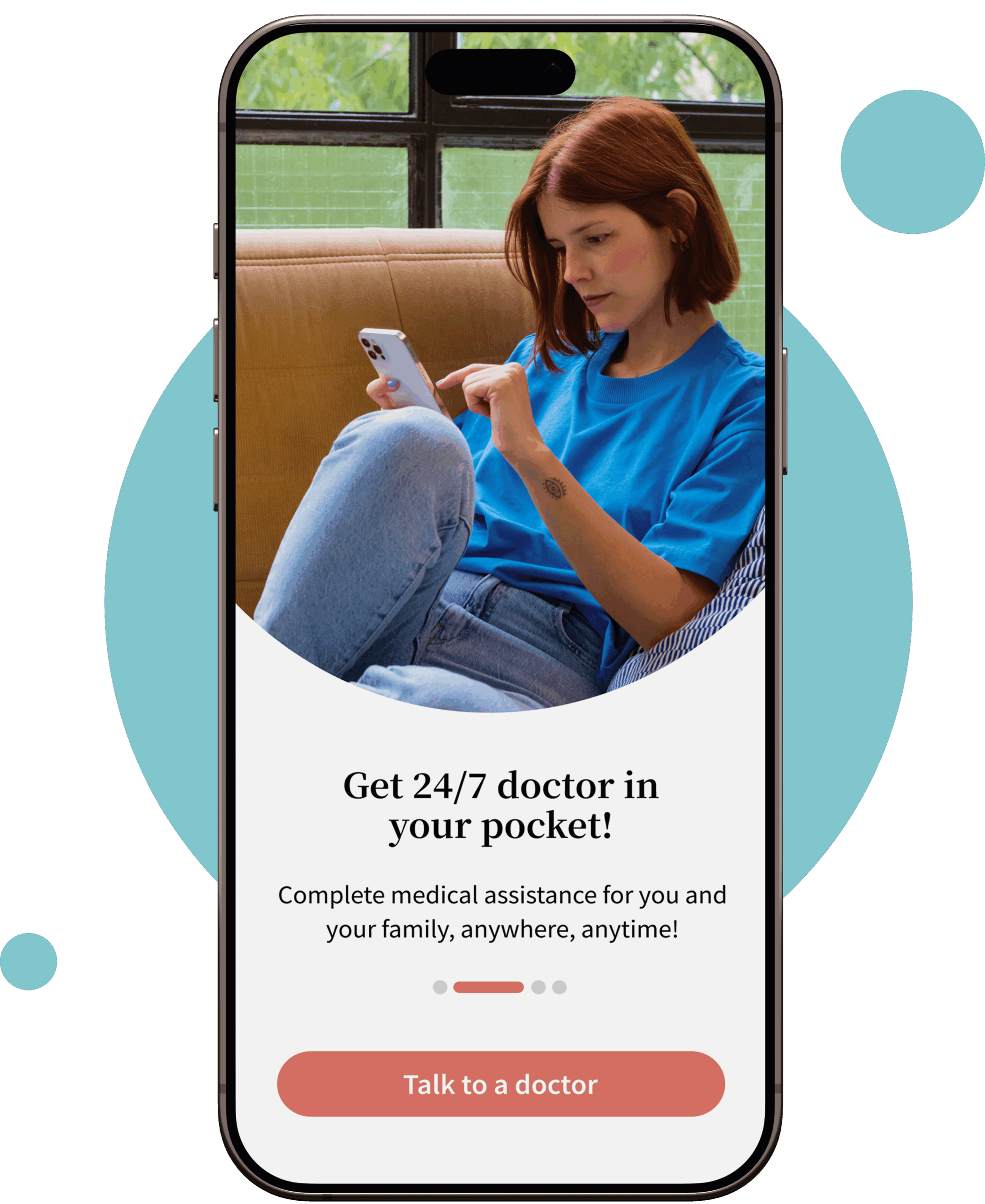
Get Chronic Obstructive Pulmonary Disease Treatment Online
Dealing with Chronic Obstructive Pulmonary Disease (COPD) can be challenging, especially when flare-ups and symptoms disrupt your daily life. At Your Doctors Online, we understand how COPD can impact your well-being. That’s why we offer convenient access to specialized doctors through our online platform. Say goodbye to long waiting times and cumbersome appointments; with just a few clicks, you can connect with an experienced doctor for personalized treatment.
Don’t let COPD dictate your life. Take control of your health today by seeking relief from COPD symptoms with the help of our dedicated team of professionals at Your Doctors Online.
What is Chronic Obstructive Pulmonary Disease?
The progressive lung disease known as chronic obstructive pulmonary disease (COPD) is characterized by limited airflow and persistent respiratory symptoms. Emphysema and chronic bronchitis are the main conditions that cause breathing difficulties, coughing, and wheezing. Long-term exposure to irritants such as air pollution and cigarette smoke can lead to COPD. It has a major effect on day-to-day activities and quality of life. Improving outcomes and lowering complications require early diagnosis and treatment.
Causes of COPD
- Prolonged exposure to secondhand smoke from cigarettes
- Extended exposure to dust and chemical fumes, among other air pollutants
- Exposure to allergens at work, such as dust and industrial chemicals
- Genetic variables, such as a lack of Alpha-1 antitrypsin
- Recurring respiratory infections in children
Symptoms of COPD
- A mucus-producing persistent cough (chronic bronchitis)
- Trouble with respiration (SOB), especially when moving around
- Tightness in the chest and wheeze
- Recurring infections of the respiratory system
- Weariness and a diminished capacity for activity

Treatment of Chronic Obstructive Pulmonary Disease
Treatment for Chronic Obstructive Pulmonary Disease (COPD) includes a variety of drugs that fit into several categories; each drug is essential for controlling symptoms and enhancing quality of life.
These Medications facilitate easier breathing by relaxing the muscles surrounding the airways.
Short-acting bronchodilators: Provide the best quick relief and are often used as rescue inhalers.
- Albuterol (ProAir, Ventolin, Proventil)
- Levalbuterol (Xopenex)
Long-acting bronchodilators: Used daily to maintain open airways over a longer period.
- Salmeterol (Serevent)
- Olodaterol (Striverdi Respimat)
Inhaled Corticosteroids
These reduce inflammation in the airways and are often combined with bronchodilators for better efficacy.
- Fluticasone (Flovent)
- Budesonide (Pulmicort)
Combination Inhalers
These combine a corticosteroid and a long-acting bronchodilator for more effective symptom control.
- Fluticasone/vilanterol (Breo Ellipta)
- Budesonide/formoterol (Symbicort)
Selective Phosphodiesterase-4 Inhibitors
These reduce inflammation and relax the airways.
- Roflumilast (Daliresp)
Anticholinergic Bronchodilators
These help to relax the muscles around the airways and reduce mucus production.
- Tiotropium (Spiriva)
- Aclidinium (Tudorza Pressair)
Systemic Corticosteroids
These are used during exacerbations to reduce inflammation quickly.
- Prednisone
These medications work in various ways to help manage the symptoms of COPD, prevent flare-ups, and improve overall lung function.
Chronic Obstructive Pulmonary Disease medication we prescribe
bronchodialator
Learn Morecorticosteroid
Learn Morecorticosteroid
Learn Morecorticosteroid
Learn MoreHow to connect with doctor for chronic obstructive pulmonary disease
Connect with a health care professional online in 3 easy steps.
1
Describe your Issue
Download our app, register and tell us about your medical issue to get started.
- COPD
- Anemia
- STD
- UTI
- Skin
- Covid
2
Chat with a Doctor
Connect with a board-certified doctor. You can chat, send pictures and videos.
Hey Dr Nicole, I have had COPD for 4 years. Can I get a prescription for my Shortness of breath and cough?
3
Get Prescription
Our online doctors can help you with your medical issues and give you prescriptions.
Prescription
- Salbutamol Inhaler
- Take four times a day
Send Prescription
How to prevent COPD?
Several crucial steps are involved in preventing chronic obstructive pulmonary disease (COPD):
- Steer clear of Smoking: The best defence against COPD is never to start smoking or, if you already do, to stop.
- Minimize Your Pollutant Exposure: Reduce exposure to air pollution, secondhand smoke, chemicals, and dust at work.
- Put on Protective Gear: To lessen exposure, wear the proper protective gear if you work in hazardous chemicals and dust areas.
- Preserve Good Indoor Air Quality: To lessen indoor pollutants, use air purifiers and make sure your home has enough ventilation.
Remain Vaccinated: Regular vaccinations, such as those for pneumococcal pneumonia and influenza, might help stave off respiratory infections that could exacerbate COPD.
FAQs About Chronic Obstructive Pulmonary Disease
What is the best cough medicine for COPD patients?
For COPD patients, managing a persistent cough is crucial. The most recommended cough medicines for COPD are: Guaifenesin (Mucinex): This expectorant works to thin and loosen mucus in the airways, facilitating coughing and airway clearance. For COPD patients, it is frequently advised to use this over-the-counter medication to assist control of productive coughs. Benzonatate (Tessalon Perles): This prescription medication numbs the lungs and throat, decreasing the activity of the cough reflex. Patients with COPD who frequently encounter dry coughing fits can benefit from it.
What is the best over-the-counter medicine for COPD?
For over-the-counter options, COPD patients can consider: Saline Nasal Spray: This helps keep nasal passages moist and can alleviate nasal congestion without causing adverse reactions with COPD medications. Acetaminophen (Tylenol): Pain and fever relief without the risk of respiratory side effects that some other medications might have. Guaifenesin (Mucinex): As mentioned, this expectorant helps clear mucus from the airways and can be safely used by many COPD patients.
How do you help someone with severe COPD?
If you have a patient with severe COPD. In that case, you can help them in the management of this disease and make it easier for them to adopt healthy lifestyle practices like taking medications and appointments seriously, going for exercise regularly with them, helping them quit smoking, using diffusers to clear the air and keep a healthy routine to manage stress.
What is the first-line treatment for COPD?
The main treatment for COPD is the use of bronchodilator inhalers available over the doctor's prescription. These inhalers help in breathing by widening your airways. Additionally, your provider may prescribe pulmonary rehabilitation and oral medications to make breathing easier. Consult a doctor at Your Doctors Online for the prescription refills of these inhalers.
What is the management for COPD?
COPD can be managed by improving the lifestyle, like quitting smoking, exercising regularly, and using prescribed inhalers and oral medications. Discuss more as per your condition with a doctor at Your Doctors Online.
What if COPD is left untreated?
If COPD is left untreated for a long time, it can cause obstructive airways and difficulty breathing. Other complications associated with a lack of activity are depression. Consult a doctor, as treatment help increase the lifespan and reduce the chances of complications. Consult our doctors at Your Doctors Online for the treatment and prescription of COPD.
What is the fastest way to heal a thrombosed hemorrhoid?
The fastest way to heal a thrombosed hemorrhoid, if it is external, is surgical excision or anti-inflammatory medications that relieve inflammation and pain. Other options include giving it time, using stool softeners, eating a high-fiber diet, and using topical creams to help ease the symptoms. Consult a doctor at Your Doctors Online immediately if your hemorrhoid is not improving and is causing pain and bleeding.
-Phindile Mkhatshwa
-brooke snow
-Okiti Stephanie
-ASIF Khan
-Chelsey
-edith bien aime
-Lesego Thejane
-Stephanie Brown
-kulwinder gill
-Elijah Mark
Get Started Today
Talk to online doctors now and get medical advice, online prescriptions, refills, lab requisitions and medical notes within minutes. On-demand healthcare services at your fingertips.





